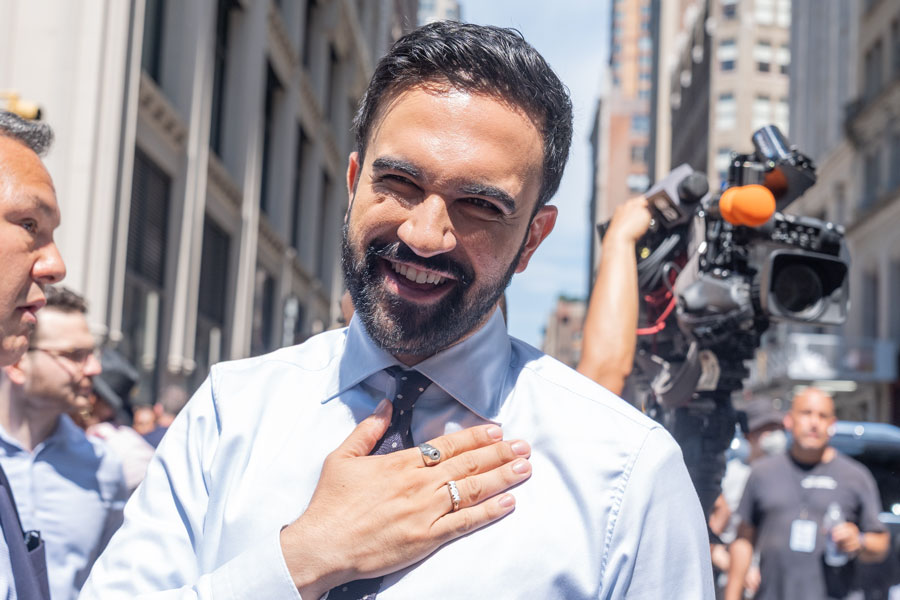
NEW YORK, NY – The first general-election debate for New York City mayor Thursday night was dominated by discussions of housing, safety, and the city’s growing affordability crisis – but the implications extended far beyond the five boroughs. For Long Island residents who commute daily or watch New York’s tax and transit decisions closely, much of the debate carried regional significance.
Held at NBC’s 30 Rockefeller Plaza and simulcast by WNBC, Telemundo 47, and Politico, the debate featured Democratic nominee Zohran Mamdani, independent Andrew Cuomo, and Republican Curtis Sliwa. The two-hour exchange highlighted sharp contrasts in how each would tackle citywide challenges that often spill over into neighboring counties.
Transit and the Commuter Connection
Mamdani doubled down on his promise to make city buses free, framing it as a lifeline for working-class New Yorkers. While the proposal focuses on the five boroughs, it could also influence how the MTA and Long Island Rail Road balance budgets and coordinate subsidies. Critics, including Cuomo, warned the idea could strain existing transit funding and deepen the agency’s deficit.
Cuomo instead pledged to stabilize the system by improving reliability and expanding police presence underground, saying the city must restore safety before pursuing new subsidies. Sliwa supported that approach, calling for more visible patrols and emphasizing that safety on subway lines affects not just city residents but also thousands of commuters traveling daily between Long Island and Manhattan.
Safety, Housing, and Outer-Borough Ties
Policing and public safety emerged as defining contrasts. Mamdani proposed creating a separate Department of Community Safety to respond to mental health calls, while Cuomo and Sliwa favored expanding the NYPD’s reach. The issue has relevance for outer borough residents who often share transit corridors with Long Island commuters, particularly on lines extending into Queens and Brooklyn.
Housing policy also took center stage. Mamdani argued for an ambitious plan to construct 200,000 affordable units over the next decade, while Cuomo pushed for streamlining development approvals. Sliwa suggested converting underused office towers into apartments. Their housing plans drew attention from suburban homeowners and landlords wary of how rent caps or new construction incentives could ripple into surrounding markets.
Property Tax and Regional Impact
For Long Island property owners, Mamdani’s proposal to reform New York City’s property tax system — raising rates on high-value homes while lowering them in working-class neighborhoods – could have indirect consequences. A shift in the city’s property tax policy might influence state-level debates over assessment fairness and regional tax equity.
Cuomo criticized the plan as “punitive,” warning that altering tax classifications without state approval could backfire, while Sliwa said such changes would discourage investment and migration into the city.
Election Timeline
The next debate is scheduled for October 22 on NY1, followed by early voting beginning October 25 and Election Day on November 4. Polls currently show Mamdani leading, with Cuomo narrowing the gap and Sliwa trailing behind.
Key Facts & What to Watch
| Topic | Details |
|---|---|
| Location & Moderators | 30 Rockefeller Plaza; Ushery, Russo, Bretón, and Goldenberg |
| Transit | Mamdani’s free-bus plan vs. Cuomo and Sliwa’s safety-first transit approach |
| Housing | 200,000 affordable homes proposed by Mamdani; conversions favored by Sliwa |
| Property Tax | Mamdani’s plan to raise rates on wealthy districts; critics say it risks flight |
| Next Debate | October 22 on NY1 |
| Relevance to Long Island | Potential MTA budget effects, policing of outer-borough transit lines, and possible ripple effects on suburban tax policy |


